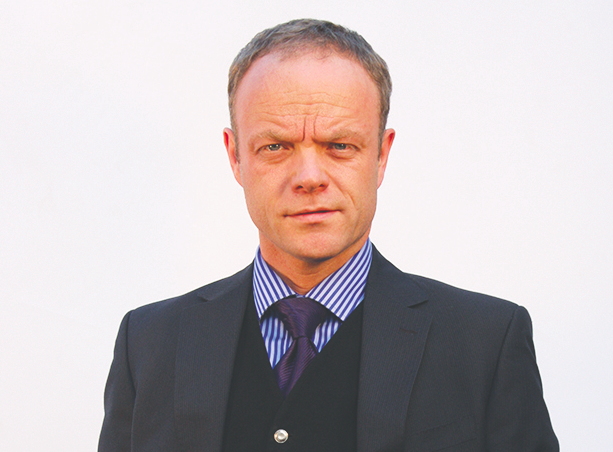As a profession as old as the hills, it would be easy to dismiss the innovation credentials of those who work in construction and civil engineering.
Traditionally seen as a typically blue-collar job, you’d be forgiven for characterising people in this industry as being most effective with their hands – and less experimental with the latest and greatest IT solutions.
But one chat with Rob Youster, head of ICT at Bam Nuttall, and you’ll probably change your mind.
Youster has been with the company for over 25 years and has witnessed a massive change in the expectations of users and clients when it comes to technology.
>See also: An education in augmented reality: 8 tips for getting started
One recent example of this is the two-year legacy project to transform the Olympic Park from a dedicated sports and events area into a residential park, known as Queen Elizabeth Olympic Park.
When the contract was awarded to start clearing the land reclamation of the Olympic Park in 2007, Bam Nuttall was the prime candidate.
As the original contractor of the Olympic Park, it had put in place high-capacity data lines coming out of Guy’s Hospital – with a five-mile point-to-point going across London and straight into the park.
With this infrastructure already in place, Bam Nuttall was first in line for the reclamation project as it allowed it to include the capex in the new tender.
The transformation project began almost immediately after the Olympics finished and involved the various stadiums and arenas being either entirely dismantled or modified, and a complete redesign of footpaths, cycle ways, roads and bridges.
From an IT infrastructure perspective, the most critical aspect was the connectivity to allow all contractors and other parties involved on the project to communicate and operate seamlessly.
‘The challenge we had was to provide wireless because new construction sites were being placed all around the park,’ says Youster, ‘So we had to have generators with cabins that then provided the wireless link because there was no electricity that we could just have a wireless link in any location.’
BAM had to mobilise slightly differently than it normally would. It had its main links back into Guy’s Hospital, but had to create another cabin office that was just outside the Park as well.
It turned to wireless specialist Trellisworks to provide the network, as well as an IP-CCTV infrastructure to ensure the site was secure over the two years – all delivered as a managed service.
‘We got involved with Trellisworks early because of their involvement with the governing body of the Olympic Park,’ Youster adds, ‘and out of Canary Wharf we were designing, even at an early stage, how that wireless infrastructure was going to be in place.’
Once it had made sure that the entire perimeter of the site was tailorable with a wireless connection, the project settled down for a year – and it is now moving into the final stages of demobilising the IT equipment and disconnecting in stages. The residential park opened in June 2014.
‘We knew it was going to be a challenge to get this IT infrastructure in place,’ Youster says. ‘With over 500 acres of land making up the project site, we had to move the locations of our temporary cabins on an almost six-monthly basis.
‘Knowing there was a lot of restrictions when it comes to fixed-line connections around the park and security issues, we knew we had to think on our feet about how we would accommodate the connections that were required.’
Multi dimensional
But innovation at BAM Nuttall, which employees 2,600 people, stretches further than laying out a complex, mass wireless network.
In a job that involves having to constantly learn about new infrastructures and requirements, Youster often finds himself at the cusp of new innovation.
In 2007, he was awarded for being one of the first to use the digital pen for a project with Cheshire Highways. Around the same time, he became a first adopter in 3D printing and augmented reality.
All of BAM’s construction sites now adhere to the government’s BIM (building information modeling) initiative, which generates and manages digital representations of physical and functional characteristics of places.
‘We build the construction project twice,’ Youster says, ‘one in the virtual world and one in the real world.’
‘We go one step further by producing it on a 3D printer – I was one of the first to introduce 3D printing in civil engineering about seven years ago, and we’ve done an amazing model that shows the client what we’re building.
BIM goes further than that by producing something in 3D, then 4D and then 5D.
‘That means that we produce a model, which looks lovely and everyone can understand, but then we actually show how it’s been constructed over time, which is moving into the 4D arena.
‘So it’s actually showing an animation of if being built over time. By moving it into 5D, we’re then showing it not only over time but also over how much it is costing over time.’
Every surface and bolt has a value against it, along with things like labour and materials, which the client has the opportunity to look at in detail – zooming in and out to see what exactly are the items are being used.
>See also: How artificial intelligence and augmented reality will change the way you work
Further to this, BAM is now doing using BIM and Apple iPads to overlay using augmented reality.
Youster has successfully led BAM in the innovation stakes, but he is keen to point out that these technologies are not just gimmicks.
‘It really is offering value,’ he says. ‘Augmented reality is demonstrating to the client that they can visually see what is being built.’
And that goes for all new innovations at BAM. Youster is part of business committees where he ensures he gets buy-in for every investment.
‘It would be easy for me to go and find the latest technology and spend £20,000,’ he says. ‘With my experience with the business, I have a very good feeling of what they are looking for.
‘The one thing that is very difficult, not just for Bam Nuttall but a lot of business out there, is that technology is going that quickly that people don’t understand sometimes what can save them money and what can improve processes.
’So my strategy is always to demonstrate with a very low profile solution and show what is possible.’







